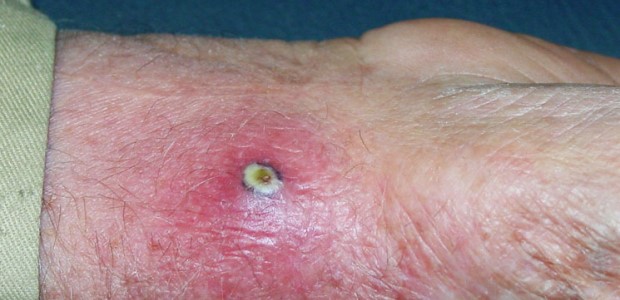
Executive Order Mandates Actions on Antibiotic-Resistant Bacteria
President Obama signed it Sept. 18 and the administration released its national strategy the same day.
The White House announced a series of Sept. 18 actions by President Obama and his administration to address the increasing risks of antibiotic-resistant bacteria – including an executive order, a new national strategy document, a "Combating Antibiotic Resistance" report from the President's Council of Advisors on Science and Technology (PCAST), and a $20 million prize to facilitate the development of point-of-care diagnostic tests so health care providers can rapidly identify highly resistant bacterial infections.
The White House announcement cited CDC's estimate that antibiotic-resistant infections are associated with 23,000 deaths and 2 million illnesses per year in the United States, all of which cause an annual impact some have estimated to be as much as $20 billion in excess direct health care costs and as much as $35 billion in lost productivity from hospitalizations and sick days.
The executive order directs federal departments and agencies to implement the national strategy and to address the PCAST report. The strategy is a five-year plan "for enhancing domestic and international capacity to prevent and contain outbreaks of antibiotic-resistant infections; maintain the efficacy of current and new antibiotics; and develop and deploy next-generation diagnostics, antibiotics, vaccines, and other therapeutics," according to the announcement.
The order establishes the Task Force for Combating Antibiotic-Resistant Bacteria, co-chaired by the secretaries of Defense, Agriculture, and Health and Human Services, and instructs the task force to submit a national action plan to the president outlining federal actions to implement the strategy and address recommendations made in the PCAST report. It also directs the Food and Drug Administration to continue taking steps to eliminate agricultural use of medically important antibiotics for growth-promotion purposes.
The strategy lists five interrelated national goals to be achieved by 2020, in collaboration with partners in health care, public health, veterinary medicine, agriculture, food safety: Slow the emergence and prevent the spread of resistant bacteria; strengthen national efforts to identify and report cases of antibiotic resistance; advance the development and use of rapid diagnostic tests for resistant bacteria; accelerate basic and applied research and development for new antibiotics as well as other therapeutics and vaccines; and improve international collaboration capacities for antibiotic resistance prevention, surveillance, control, and antibiotic research and development.
The National Institutes of Health and Biomedical Advanced Research and Development Authority will co-sponsor the $20 million prize. The announcement says HHS agencies soon will host a public meeting for stakeholders to ensure the competition focuses on the type of diagnostics most needed by the medical and public health communities for recognizing and treating antibiotic-resistant bacterial infections.